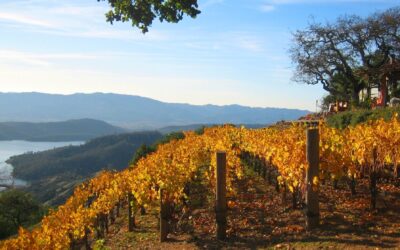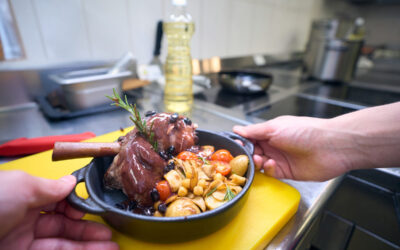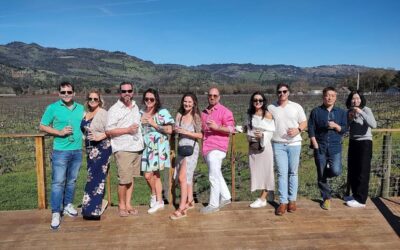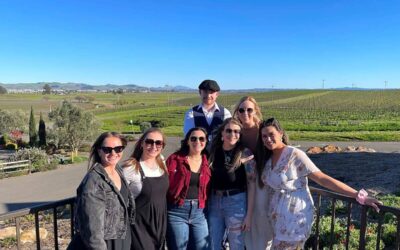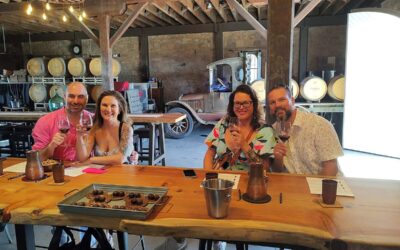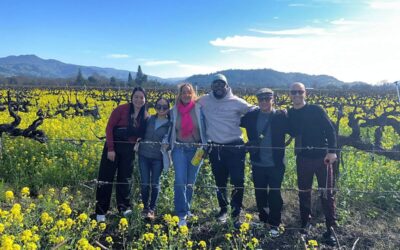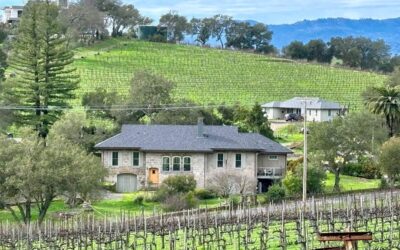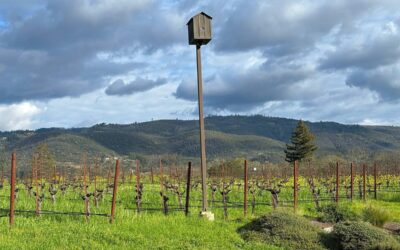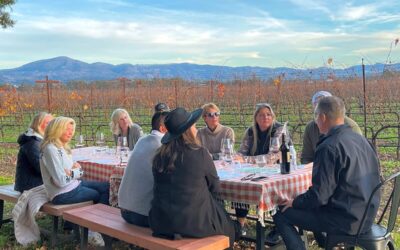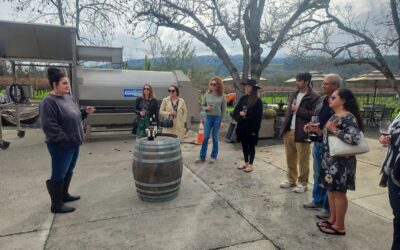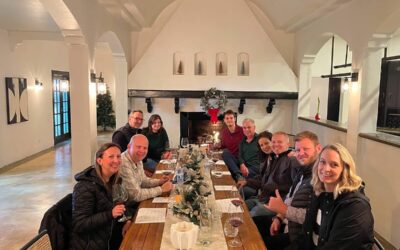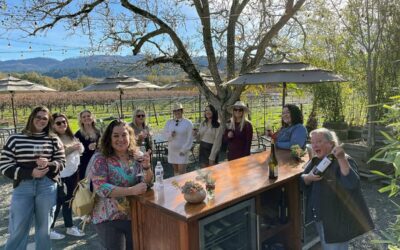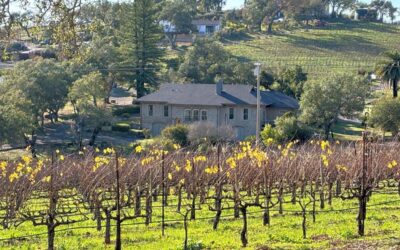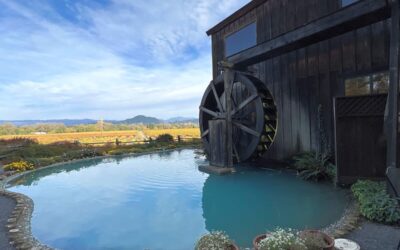Welcome to our Blog
EXPERIENCE WINE COUNTRY NEWS
Top 7 Mountain Wineries in Napa Valley
Nestled among the rolling hills and rugged terrains of Napa Valley are some of the most unique and breathtaking mountainside wineries. These gems aren’t just beautiful—they produce some of the most complex and flavor-packed wines thanks to their distinctive mountain...
Recipe Feature: Spring Herb Roasted Lamb with Spring Vegetables
This recipe combines the tender flavors of spring lamb with a vibrant mix of seasonal vegetables, all infused with a delightful herb crust. Ingredients: For the Lamb: 2-2 ½ lb bone-in leg of lamb, trimmed 2 tablespoons olive oil 1 tablespoon chopped fresh rosemary 1...
Uncorking Personalized Wine Experiences: Private Tours vs. Join-In Tours
Embarking on a wine tour is akin to stepping into a world where every sip tells a story, every vineyard has a history, and every moment is ripe for making memories. Whether you're drawn to the personalized wine experiences of Private Tours or the spirited camaraderie...
Customized Sonoma Wine Tours: Tailored Experiences & Private Guides
The excitement of Sonoma can be yours with a customized tour crafted by the professionals at Platypus Wine Tours. Immerse in Sonoma’s Wine Tour scene and enjoy all the region has to offer. From fascinating vineyards and wineries to fantastic scenery, Sonoma is the...
Unveiling the Gems: Best St. Helena Wineries in Napa Valley
St. Helena, nestled in the heart of Napa Valley, is a must stop location for wine lovers. With a rich viticultural history and a charming small-town atmosphere, it's no wonder many find some of the best St. Helena wineries in Napa Valley. But with so many exceptional...
Recipe Feature: Lemon Herb Roast Chicken
Planning a Napa Valley wine tour? Want to share with your friends and family your trip once you are back home? A delicious home-cooked meal paired with a wine you brought back is the perfect way to share your wine tasting trip. This Lemon Herb Roast Chicken is a...
Experience Sonoma Wine Country Tours: Exquisite Tastings & Experiences
Experience Sonoma wine country tours and enjoy personalized demonstrations of winemaking and the welcoming reception of the area’s most prestigious vineyards. Private tours include visits to the vineyards and opportunities to taste some of the area’s most exclusive...
Benefits of Opting for Private Wine Tours
Exclusive wine tours are a fantastic way to reward friends and family, meet all your objectives, and have a safe and fun outing that will be yours alone to remember. Planning your interests and preferences in advance with your tour company can offer a more intimate...
What’s the Ideal Season for Visiting Napa, California, Wineries?
Frequent visitors know there is never a wrong time to be in Napa Valley. The scenery, weather, wineries, and welcoming businesses are always there, always welcoming. So, what are the ideal Napa Valley winery seasons to visit? The answer: Anytime is the right time to...
Recipe Feature: Artichoke and Spinach Stuffed Mushrooms
Elevate your culinary repertoire with our enticing Artichoke and Spinach Stuffed Mushrooms recipe! This delightful appetizer promises a burst of flavors in every bite, making it an excellent choice for your gatherings. Artichoke and Spinach Stuffed Mushrooms Recipe:...
Top Wineries in Napa that are Family-Friendly
Many businesses and wineries in Napa Valley are family-friendly, prioritizing a welcoming atmosphere for families. By offering elements like outdoor games, picnic areas, gardens, and activities for everyone to enjoy, several family-friendly Napa Valley wineries...
Recipe Feature: Winter Vegetable Soup
Indulge in the warmth of winter with a delightful and customizable recipe for Winter Vegetable Soup. As the season unfolds, there's no better way to embrace the coziness than with a hearty bowl of nourishing goodness. Our basic recipe allows you to savor the rich...
Best Sonoma Wineries for Guided Tours
Wine tasting adventures are made even more encompassing with guided tours that provide exclusive behind-the-scenes access to the entire winemaking process. Guests can see the journey from grape to bottle firsthand while visiting the vineyards, cellars, and barrel...
Wine Tasting Tips to Help Make Your Wine Tour Exceptional
Wine country tours of Napa Valley wineries are more than the camaraderie of the group, fantastic scenery, enjoyment of seeing wineries up close, and the fun of tasting the excellent wines. A little deeper look opens another world, the ability to identify the subtle...
Types of Napa Valley Wine Tours
Platypus is a premier wine tour company in Napa Valley, presenting tours and wine tastings at pristine boutique wineries in Napa Valley and Sonoma County. The best Napa Valley wine tour companies, like Platypus Wine Tours, offer delightful educational experiences to...
Top Vineyards in Napa Valley to Visit
During a well-organized and safe Napa Valley wine tour, visitors learn about the history and lore of the area. Stories about the iconic vineyards and the established wineries contribute to the region’s notable culture. Some well-established wineries have a long...
December Recipe Feature: Meyer Lemon Bars with a Wine Country Twist
December Recipe Feature: Meyer Lemon Bars with a Wine Country Twist Once again, the culinary crew at Platypus Wine Tours in Napa is sharing a magical recipe that offers an alternative to your regular cuisine. These Meyer Lemon Bars are great as a dessert or to be...
Uncorking Napa’s Finest: A Guide to Exceptional Wineries
Napa Valley is one of the most breathtaking wine regions in the world. Our small but mighty home catches the sunshine all year round and delivers it right to the grapes, giving them ripe flavors that have brought wine lovers from all over the world. There are so many...

